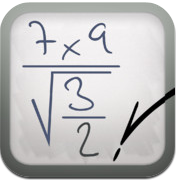
Original Post:
The app, Tapestry, allows a user to read community-generated multimodal text. Using the website on the computer permits the user to easily compose a story. What makes it different from reading (or writing) an eBook or blog, however, is that the author has total control over the size and position of the text. More importantly though, the author controls when each word or phrase is revealed. The pacing of the narrative is therefore shared between the author and the reader. While the reader advances the story by tapping anywhere on the screen, the author has determined where and when words and phrases will appear on the screen.
Check out this example: https://readtapestry.com/s/zsSwRYknz/
Using this app and website as an authoring tool for children to use to publish and share their own work is an area of particular promise for using Tapestry.
Currently, there appears to be no audio component to this app and the experience more closely resembles reading a story rather than interacting with an app. This seems to be an intentional design choice by the app developers and in my opinion is executed well.
I did try a test with the iOS VoiceOver accessibility feature and unfortunately, this app isn't currently VoiceOver friendly. While the text on the screen can be accessed by the screen reader, VoiceOver first reads the image label - which is an incomprehensible sequence of letters and numbers. It seems that this could be an easy fix and potentially open the app up to users with vision and learning disabilities.
Currently the content available to read is sparse, particularly stories that would be of interest to school-aged children. However, users are uploading stories daily. Businesses are also creating their own narratives - quasi story/commercials which are a pleasant alternative to banner ads.









